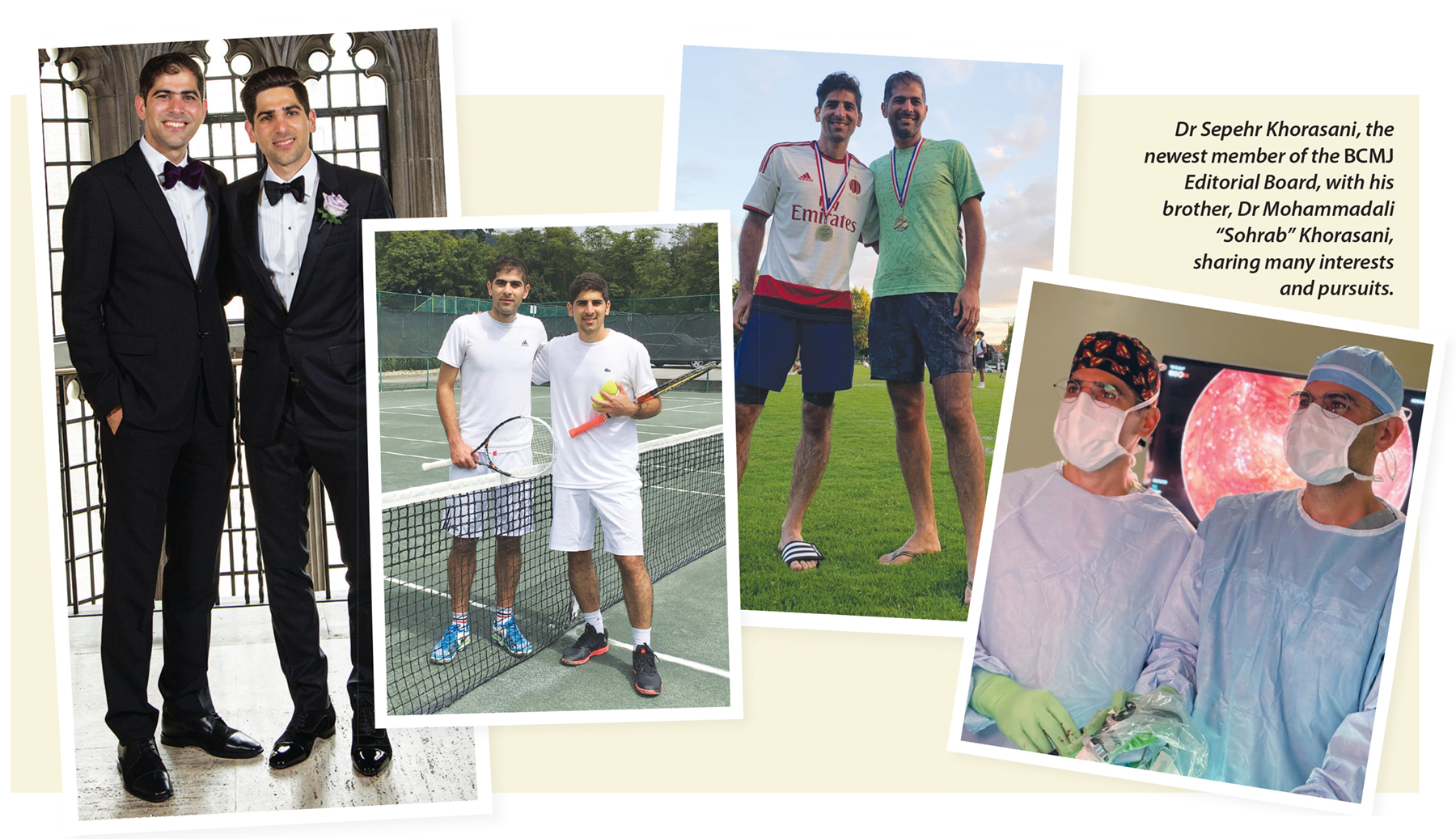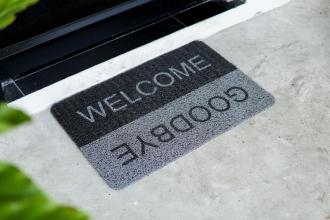Interview: Dr Sepehr Khorasani
A case of mistaken identities and intertwining lives for the newest BCMJ Editorial Board member.
 Dr Sepehr Khorasani, the newest member of the BCMJ Editorial Board, is clear about his reasons for wanting to be a surgeon. “I wanted to do surgery from the very beginning,” he explains. “Even as a child, I was very hands-on with cooking—cleaning and prepping a whole chicken, that sort of thing. I guess I loved the anatomy and procedural aspects.” He laughs. “I recognized that surgery is a profession where I can use my skills and do what I love, while making a positive difference in others’ lives and well-being.”
Dr Sepehr Khorasani, the newest member of the BCMJ Editorial Board, is clear about his reasons for wanting to be a surgeon. “I wanted to do surgery from the very beginning,” he explains. “Even as a child, I was very hands-on with cooking—cleaning and prepping a whole chicken, that sort of thing. I guess I loved the anatomy and procedural aspects.” He laughs. “I recognized that surgery is a profession where I can use my skills and do what I love, while making a positive difference in others’ lives and well-being.”
Dr Khorasani grew up in Isfahan, Iran, and his family immigrated to Canada when he was a teenager. His older brother, Mohammadali “Sohrab,” is also a surgeon. Two brothers close in age who are both athletically and academically competitive might have butted heads as teens, but the opposite was true for Sepehr and Sohrab. “He’s the very best big brother, always kind and supportive toward me. We’re 2 years apart. We walk the same; we act the same. People think we’re twins.”
As teens in Iran, Sepehr and Sohrab played high-level soccer and tennis, often training together. Sepehr was close to going professional in tennis and was ranked the top junior player in the country at one point. Putting that aside to move to Vancouver was tough, but he found that embracing life in a new place was easier than he’d expected. “I feel like I should have felt lonely and out of place, but what’s so great about Canada, and Vancouver specifically, is that I felt so welcomed in high school. Even speaking very little English, I found everyone so supportive and nice. I never felt like an outsider.” Getting involved in the community through sport helped Sepehr integrate into the new environment—as did having Sohrab as a built-in friend and companion.
Sohrab stuck by Sepehr’s side in medical school as well, although that wasn’t initially the plan. When the time came for Sohrab to choose a career path, he went into electrical engineering. Two years later, he decided to change his focus and go into medicine, which happened to be the same time Sepehr was entering medical school. “We ended up in UBC med school together, did our surgical residency together, and both got accepted to Toronto for our surgical fellowships. He did surgical oncology; I did colorectal surgery. We even overlapped in the same hospitals during fellowship.”
Once the brothers’ decade-long education journey was complete, they were both offered positions in Victoria, and they continue to work in the same hospitals. “Now Sohrab and I live less than 2 kilometres apart—a 20-minute walk. We run cases by each other and assist one another in the operating room, and people continue to mix us up all the time, thinking we are the same person, just like always!”
This tale of two surgeon brothers and a lifelong case of parallel lives continued with Sepehr’s recruitment to the BCMJ Editorial Board. When the BCMJ was looking for a new board member, editor-in-chief Dr Caitlin Dunne heard about two highly recommended surgeons—brothers—in Victoria. Regretfully, Sohrab had to pass on the opportunity due to his other educational and research commitments. Sepehr explains: “Dr Dunne got in touch with Sohrab and said ‘I understand your brother has a research education; it seems like he might be a perfect fit for us’ and asked him to run the idea by me. When Sohrab and I talked about it, we wondered if once again we had been mixed up to begin with, as it’s true, my research background makes me a great fit for the role as well.” He laughs and says, “At any rate, all’s well that ends well. I’m glad I can bring my perspective on research and surgical aspects of care to the Editorial Board.”
When speaking about his own experience with medical publishing and the importance of local research, Dr Khorasani strongly encourages young authors to consider writing and submitting articles to the BCMJ. “Publication gives physicians and health care providers a voice. It’s a great venue to share your passion, build on each other’s experiences and knowledge, and advocate to improve and enhance patient care,” he says. “The first article is the most difficult, but once you publish one, you’ll find it’s addictive. You feel heard, and believe me, you’ll save that hard copy forever.”
Dr Khorasani’s first editorial appeared in the July/August 2024 issue.

hidden
 |
| This work is licensed under a Creative Commons Attribution-NonCommercial-NoDerivatives 4.0 International License. |
hidden
Ms Lyon is a staff member of the BC Medical Journal.

